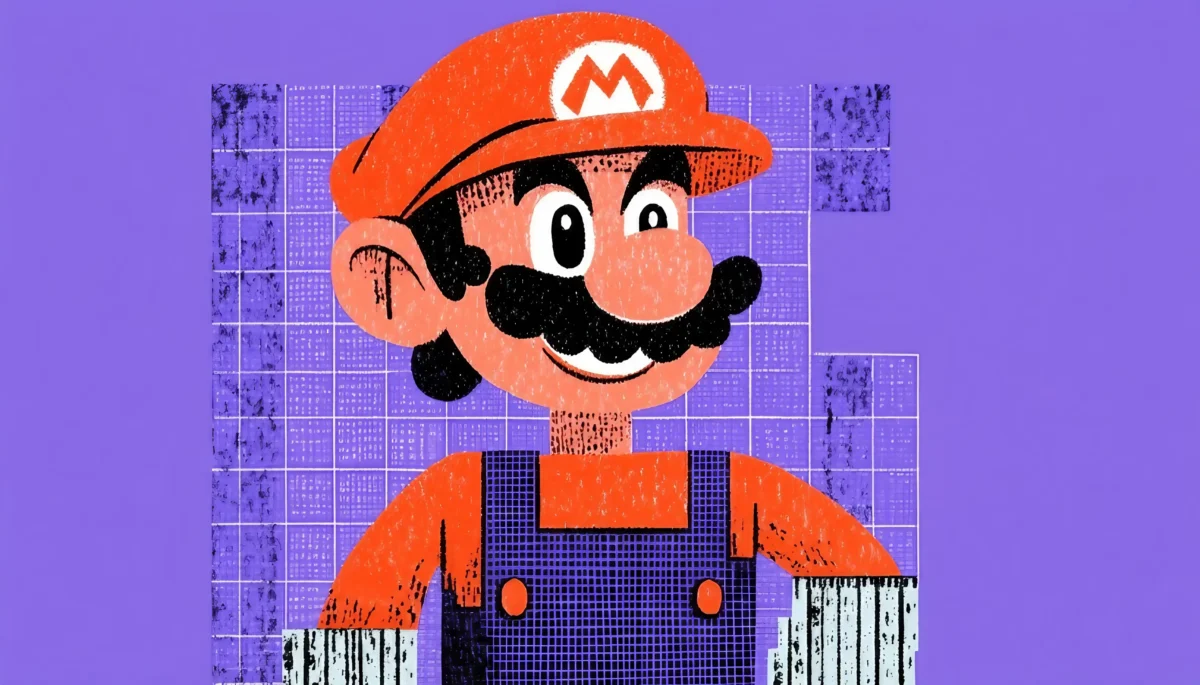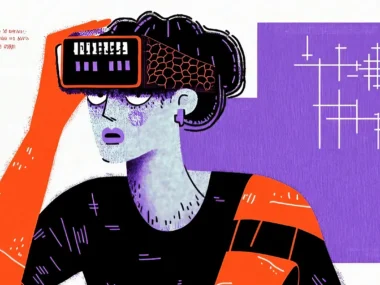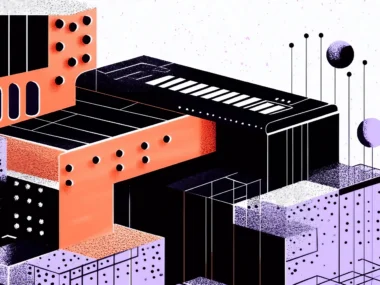Imagine your favorite mobile app. The one you always find yourself opening without thinking, like muscle memory. What makes it so irresistible? One major reason might be gamification. This strategy takes something that could be mundane and turns it into something fun, challenging, or even a little addictive. Gamification taps into our basic human psychology—the need for progress, competition, and reward. And when done right, it can make your users not only stick around but genuinely enjoy every moment.
This article unpacks the power of gamification in UX, showing you how you can transform user experiences into compelling, memorable adventures.

What is gamification in UX?
Turning Mundane Interactions into Memorable Experiences
At its heart, gamification is all about transforming everyday digital interactions into engaging, fun, and rewarding experiences. But let’s be clear—gamification doesn’t mean turning your app or website into a video game. Instead, it’s about weaving in game-like elements to keep users motivated, entertained, and wanting to come back for more. It’s like sprinkling a touch of magic onto the ordinary, turning routine tasks into small moments of joy and accomplishment.
Imagine you’re using a fitness app. Instead of just logging your steps, you get a badge for hitting 10,000 steps, a streak counter that keeps track of your daily progress, and a leaderboard where you can see how you rank against friends. Suddenly, your daily walk feels like an accomplishment rather than just exercise. These elements aren’t just cute add-ons—they play into the fundamental human desire for achievement, recognition, and social connection.
Let’s take Duolingo as another example. Language learning can feel tedious and slow, but Duolingo uses points, streaks, levels, and badges to keep you hooked. Complete a lesson, and you earn XP. Keep your streak going, and you’ll feel the satisfaction of daily progress. Reach a new level, and the platform gives you a badge to show off your hard work. Each little reward pushes you further, giving you a sense of progress and accomplishment. Gamification, in this sense, keeps you learning by breaking down the daunting task of mastering a new language into bite-sized achievements.
Another classic example? LinkedIn’s “Profile Strength” bar. This seemingly simple progress bar nudges users to complete various parts of their profiles by showing them how close they are to having an “All-Star” status. Each time you add a skill, a certification, or a previous job role, you see that bar inch closer to 100%. The concept is simple, yet effective—it gives users a visual cue of their progress and, in doing so, taps into their innate desire for completeness. Gamification here isn’t just about fun; it’s about giving users a reason to keep improving their profile, thus adding value to LinkedIn’s ecosystem.
Or think of Google Maps’ “Local Guides” program. When you leave reviews, answer questions, or upload photos, you earn points and rise through levels, even receiving special badges for reaching milestones. This system motivates people to contribute content by giving them a sense of status within the community. Users feel rewarded, and Google gets the added benefit of high-quality, user-generated content that makes its platform more valuable.
Each of these examples highlights a different aspect of gamification: progress, recognition, social engagement, and status. Gamification uses these psychological triggers to make everyday actions feel significant, tapping into our need for achievement, social connection, and even a touch of competition. It’s about transforming simple actions into something meaningful.

Why Gamification Works: The Psychology Behind the Play
Unlocking the Science of User Engagement
So, what is it about gamification that gets users so hooked? Let’s dig a little deeper into the psychology behind it. Gamification taps into some of the most fundamental aspects of human behavior—our natural inclination toward rewards, competition, and progress. At the heart of it is a powerful chemical called dopamine, the brain’s “feel-good” neurotransmitter, which plays a big role in motivation and habit formation.
Every time we achieve something, even something as small as earning a point or badge, our brain releases a bit of dopamine. This rush reinforces our actions, creating a feedback loop of action and reward that keeps us coming back. In essence, gamification leverages the brain’s reward system, creating a series of “wins” that feel satisfying and meaningful. Think about it as the digital version of the satisfaction we get when we check an item off a to-do list.
Let’s take a look at two psychological motivators gamification taps into: intrinsic motivation and extrinsic motivation. Intrinsic motivation is the natural enjoyment of the task itself, where we engage in an activity simply because we find it fulfilling. For instance, a language-learning app that shows steady progress and offers small challenges makes learning inherently enjoyable. Extrinsic motivation, on the other hand, involves rewards that come from outside—such as points, prizes, or even social recognition. When you’re on a fitness app that awards you badges and points for daily activity, it’s that external push that keeps you logging in and pushing yourself.
A perfect example of gamification harnessing these motivations is Habitica, an app that turns to-do lists into an RPG (role-playing game) experience. Each task you complete translates into “experience points” that level up your character and earn you rewards. Suddenly, mundane chores feel like an adventure. That’s intrinsic motivation at work—making the task itself fun. But then there’s also extrinsic motivation. The app gives you in-game rewards and unlocks items, creating a sense of achievement that encourages users to stay on top of their goals.
Think about sticker charts used with children: every time they complete a task, they get a sticker, which gradually fills up the chart. Adults aren’t so different. We’ve simply swapped stickers for digital badges, progress bars, and levels. These small rewards give us a sense of progress and achievement, encouraging us to continue. Whether it’s crossing off each day on a Duolingo streak or earning points on a shopping rewards app, gamification uses our psychological drive for recognition and progress to keep us engaged.
Finally, gamification taps into the concept of loss aversion—our tendency to avoid losing something valuable. When an app introduces a “streak” feature, like Snapchat’s Snap Streaks, users are motivated to keep logging in to maintain their streak. Breaking it would feel like a loss, which can be even more motivating than the reward itself. It’s a clever psychological trick that plays on our fear of losing progress and subtly encourages habitual use.
In short, gamification doesn’t just make an app or website more enjoyable—it strategically uses psychology to create an experience that users feel compelled to return to. By combining intrinsic enjoyment with extrinsic rewards, it creates a perfect storm of motivation, turning even the simplest actions into meaningful, rewarding experiences that keep users hooked.

Key Gamification Elements You Can Use in UX Design
To build gamification into your product, focus on the core elements that consistently engage users:
Points and Badges
Points give users instant feedback. You can integrate a points system that rewards users every time they complete an action that benefits both them and your product. For example, an e-learning platform might award points for each completed module. And badges? They’re the virtual trophies of gamification. Users love to collect badges that represent their achievements, even if they’re purely digital.
A creative example of badges is Foursquare, where users earn badges by checking in at locations. Over time, users can earn exclusive badges, like becoming the “mayor” of a place they visit frequently. This creates a sense of ownership and pride, pushing users to continue engaging.
Levels and Experience Points (XP)
Levels give users a sense of hierarchy and progression. By leveling up, users feel that they’re advancing in their journey with your product. Let’s say you’re designing a fitness app—users could start at “Beginner” and work their way up to “Champion” by accumulating experience points (XP) each time they log a workout. This system shows users that their efforts are making a difference, keeping them motivated to reach the next level.
Progress Bars
Progress bars are highly effective at guiding users toward completing a process. They can be used in various settings, from onboarding to profile setup. The trick is to keep the progress visible and reachable. LinkedIn’s profile setup uses a progress bar to show users what percentage of their profile is complete, making them feel closer to being “100% done” with each step.
Leaderboards
Leaderboards cater to users’ competitive instincts. However, use them sparingly and in appropriate contexts, as not all users respond positively to competition. Apps that track physical activity, like Strava, implement leaderboards by showing where users rank among friends or other nearby users. This sparks healthy rivalry without creating a pressure-cooker environment.
Challenges and Rewards
Challenges create a clear path for users to follow, making the experience feel more like a journey than a chore. Take Spotify’s Wrapped feature, for instance, which annually summarizes users’ listening habits. Users love seeing their “top songs” or “minutes listened” and feel rewarded for their loyalty. It’s a fun, engaging way to celebrate user engagement.
Streaks
Streaks are perfect for apps that rely on daily engagement, such as meditation or language-learning apps. By maintaining a streak, users feel committed to a routine. For example, Snapchat’s “Snapstreaks” encourage users to send a snap daily to maintain their streak, creating a mini-goal that strengthens user loyalty.

Gamification isn’t just for fun—it’s for results
Gamification isn’t just about making users happy; it’s also about meeting your business goals. How? By keeping users engaged, you’re more likely to convert them from casual visitors into loyal customers. Here are a few direct benefits gamification can bring to your business:
Increased User Retention
When users feel like they’re achieving something, they’re more likely to return. Gamified elements like streaks, daily goals, or rewards can keep users coming back regularly.
Enhanced User Experience
Gamification makes experiences more enjoyable and memorable. When users enjoy the experience, they’re likely to leave with positive impressions, boosting brand loyalty.
More Data on User Behavior
Gamification elements often require users to interact with different areas of your app, providing valuable insights into their behavior. Knowing what features they engage with most can help refine your UX even further.
How to Add Gamification Without Overwhelming Your UX
So, you’re ready to bring gamification to your UX—great choice! But to truly make it successful, there are a few key principles to keep in mind. Gamification should feel like a natural part of the user experience, adding enjoyment and motivation without creating confusion or frustration. Below are some best practices to ensure your gamification elements enhance, rather than detract from, your UX.
Keep it Simple
Gamification should simplify and enrich the user experience, not clutter it. When too many game-like elements are introduced, users can feel lost, and the overall usability may suffer. Start with one or two core mechanics, like a points system or a progress bar, that align with your app’s purpose. A fitness app, for example, might start with daily step goals and badges for hitting milestones, while a learning app might introduce levels and experience points. Begin with these basics and only layer in more elements if they genuinely add value. Think of it like seasoning a dish — you want just enough to bring out the flavors without overwhelming the taste.
Align Gamification Elements with Your Goals
Your gamification strategy should support your product’s core goals. Ask yourself: what specific actions or behaviors do you want to encourage? If you’re trying to increase daily engagement, a daily challenge feature or a streak counter might be more impactful than a competitive leaderboard. Consider Duolingo again: its goal is to get users learning every day, so it uses streaks and daily XP goals rather than a global leaderboard. By aligning game mechanics with your product’s objectives, you ensure that gamification drives the right behaviors and contributes meaningfully to your users’ journey.
Test and Iterate
No two audiences are the same, and gamification is rarely a one-size-fits-all approach. Start by testing different mechanics on smaller user segments to see what resonates best. You may find that some users respond positively to competitive features, like leaderboards, while others prefer personal achievement features, like badges or levels. Gather data, solicit user feedback, and continuously iterate. This iterative approach allows you to adjust based on real user experiences, optimizing for engagement without compromising UX. Each iteration brings you closer to the optimal experience for your audience, so consider this phase as a step up in your gamification strategy.
Reward Progress, Not Just Completion
One of the most powerful aspects of gamification is celebrating small wins. Acknowledging users’ incremental progress makes the journey feel more achievable and rewarding. Let’s say you’re designing a productivity app: instead of only rewarding users when they finish a major task, give small incentives along the way. You might show a progress bar filling up as they work on a project or give mini-badges for each completed sub-task. These “micro-rewards” tap into the user’s desire for achievement, helping them feel accomplished even as they work toward larger goals.
Create a Balance Between Challenge and Ability
Good gamification provides the right level of challenge to keep users engaged without overwhelming them. If the tasks or rewards feel too easy, users might get bored; if they’re too difficult, they might feel discouraged and stop using the app altogether. The key is to find a balance—challenge users just enough to keep them engaged and motivated. For example, consider offering different difficulty levels in a language learning app, where beginners can earn simple badges, and more advanced learners have the option to tackle harder challenges with bigger rewards. This allows users to work at their own pace while still feeling a sense of progression and achievement.
Avoid Overuse of Rewards and Focus on Meaningful Incentives
Not every action needs a reward. If users receive badges or points for every little interaction, the rewards can start to feel trivial and lose their value. Instead, focus on rewarding actions that genuinely reflect progress and effort. For instance, instead of awarding a badge every time someone opens an app, consider recognizing them after they’ve completed a series of daily tasks or achieved a milestone. This makes the rewards more meaningful, encouraging users to engage in ways that add real value to their experience.
Remember, gamification should feel organic. Users should feel like the rewards and challenges are a natural part of the experience, not tacked-on gimmicks. Keeping these best practices in mind will help ensure that your gamified UX is not only enjoyable but also highly effective. By strategically implementing game elements that align with user goals and product objectives, you can turn ordinary interactions into meaningful experiences, making users more likely to stick around and love every minute they spend with your product.

Avoiding the Pitfalls of Over-Gamifying Your UX
Gamification can be a powerful tool, but if not implemented thoughtfully, it can actually harm the user experience and drive users away. Knowing what to avoid is just as crucial as understanding best practices. Here are some common pitfalls to watch out for to ensure your gamification efforts don’t backfire.
Overuse of Rewards
Giving users rewards for every tiny action can diminish the sense of achievement and make rewards feel trivial. Imagine if every time you clicked a button, you earned a badge—eventually, those badges would start to feel meaningless. Over-rewarding can dilute the excitement and motivation users feel. To keep rewards impactful, make them earned, not just given. For instance, instead of awarding badges for logging in, offer them for reaching meaningful milestones, like completing a week-long streak or achieving a new level. This approach keeps users invested in the experience, as each reward feels like a genuine accomplishment rather than a participation trophy.
Creating Unhealthy Competition
Competition can be motivating, but when leaderboards or competitive features are poorly designed, they can have the opposite effect. If users feel like they’re constantly losing or far behind others, they may feel discouraged and disengaged. This is especially true for casual users who aren’t looking for intense competition. For example, a global leaderboard might make newer users feel defeated when they see they’re ranked in the thousands. Instead, consider leaderboards that focus on personal progress or friend-based challenges. This creates a more positive environment, encouraging users to improve at their own pace without the pressure of outdoing everyone else.
A great alternative is to use “personal best” records or achievement-based leaderboards. For instance, a fitness app could track a user’s highest number of steps in a day or their fastest run time, encouraging personal growth rather than relentless comparison with others. This way, users can still feel motivated without feeling crushed by overwhelming competition.
Lack of Genuine Value
Gamification should enhance the product’s core value, not distract from it. Users can tell when gamified elements are just slapped onto an app or website with no real purpose. For example, if a productivity app awards points for random actions that don’t contribute to productivity, users may find it irritating rather than engaging. Each gamified element should serve a purpose, reinforcing the main value proposition of the product.
Let’s say you have a language-learning app. Adding rewards for watching ads or other unrelated actions can feel forced and counterproductive. Instead, focus on gamifying actions that align directly with the user’s learning goals, like completing a lesson or mastering a new set of vocabulary. Gamified elements should feel meaningful, encouraging users to engage in ways that align with the product’s primary value.
Risk of “Burnout” from Too Many Challenges
If gamification becomes too demanding, it can lead to user burnout. Imagine a fitness app that constantly pushes daily challenges, streaks, and milestones—it might keep users engaged at first, but the pressure to continually participate without a break can lead to fatigue. Gamification should be motivating, not exhausting. It’s essential to strike a balance that keeps users motivated but allows for flexibility. Consider incorporating “break” days or low-stakes activities that keep users engaged without feeling overwhelmed.
For instance, a habit-building app could include optional “rest days” for long-time users, where they maintain their streak even if they skip a day. This allows users to feel the satisfaction of progress without the risk of burnout.
Gamification often involves social elements, like sharing achievements, competing with friends, or participating in community challenges. However, not all users want a social experience. For example, introverted users may feel uncomfortable with social challenges or leaderboards that require public sharing. Misunderstanding your audience’s social preferences can lead to gamified features that feel intrusive rather than engaging.
Instead of assuming all users want a public experience, offer options for private or solo play. Allow users to choose whether to share their achievements or keep their progress private. A good example of this is Duolingo’s approach: users can choose to compete on leaderboards or opt out and focus on their personal learning journey. Respecting these preferences makes gamification feel more inclusive and user-centered.
Thoughtful Gamification Yields Long-Term Engagement
Gamification isn’t a one-size-fits-all solution; it requires careful planning and a user-centric approach to ensure it enhances rather than hinders the user experience. By avoiding these common pitfalls and focusing on meaningful, balanced, and aligned gamification elements, you can create a product that engages and delights users without overwhelming or alienating them. When done right, gamification transforms ordinary interactions into moments of accomplishment, making users excited to keep coming back.








